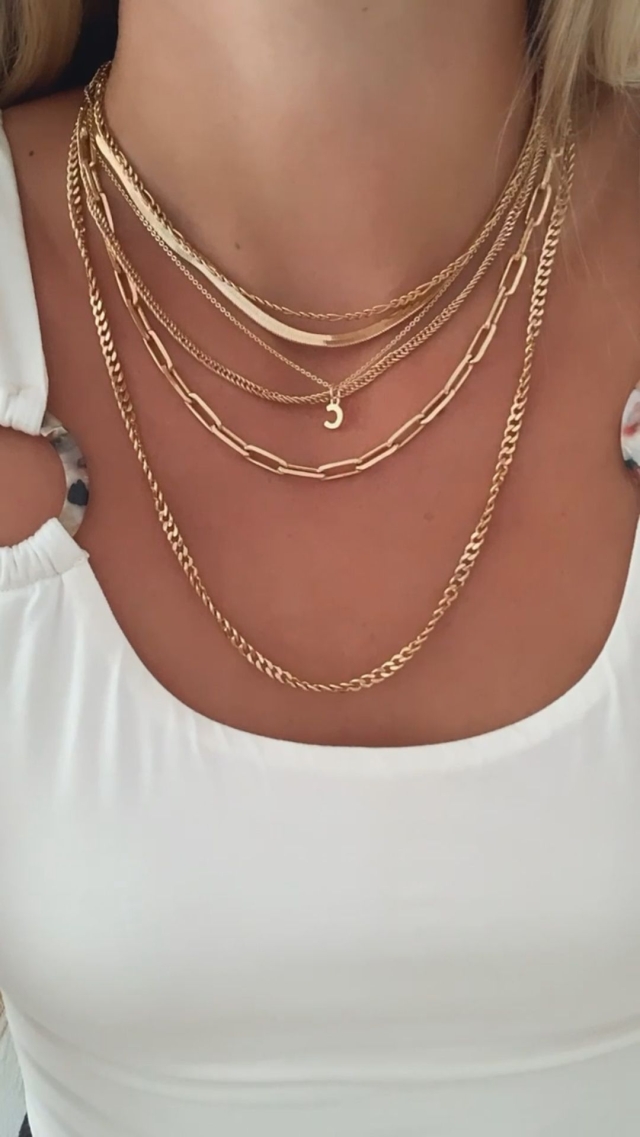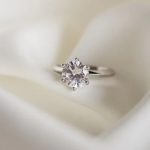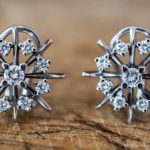For centuries, precious metals like gold, silver and bronze have been used in fine jewelry. From royal families to common citizens, metal jewelry has long been a symbol of class and luxury. Additionally, some people may have heirloom or vintage pieces that need to be repaired or restored. It’s important to understand the different techniques for repairing broken metal jewelry as these pieces can become damaged with time due to wear and tear.
Simple Mending Techniques: Explaining how to use simple tools for repairing broken metal jewelry
The most common technique for fixing minor damage on metal jewelry is with mending tools. Some basic supplies that are needed are sandpaper, pliers and soldering supplies such as flux and solder if necessary (good quality tools will be more effective). Sanding away burrs can help start the repair process by cleaning up any jagged edges while pliers can be used to bend certain parts of the piece back into place.
If necessary, pieces can also be soldered using flux on both pieces before adding solder then heating them with a torch which should meld them back together. Acetone can improve adhesion of the joint if desired then followed with brushing abrasive compound over it for a clean finish. Finally, polishing cloths can be used to bring an extra level of shine to the item afterwards.
Advanced Repairs: Describing the benefits and techniques of advanced designs
If more intensive repairs are needed on metal jewelry, it’s recommended that craftspeople contact a professional jeweler or have someone else do it who is familiar with advanced techniques. This method will involve welding which requires special workbenches and torches in order to join different parts of the item together securely since it makes use of significantly higher temperatures than soldering does.
Additional tasks such as engraving or engrossing design patterns onto the item are possible depending on its material but they may require special machines in order to accomplish them properly.
After finishing repairs on either simpler or complex items, a final check should always be done in order ensure that all parts are secure before wearing or displaying them afterwards so you will know exactly how beneficial your efforts were worth in terms of restoring your piece back its former beauty.
Tool and Material Checklist
When jewelry made of metal gets broken, it doesn’t have to be thrown away. You can fix most components by soldering them together again with a few simple tools and materials. This article covers what items you will need to repair broken metal jewelry, as well as where you can source them.
First, the type of soldering material required depends on what kind of metal the jewelry is made from. Common types used for jewelry include sterling silver, gold, brass, and copper. Each type requires its own solder that is fit for use with metals of similar properties.
The solder should be easily meltable at lower temperatures and able to form a strong bond with the other parts of the jewellery piece when cooled. Solder can be found in most hardware stores, or alternatively ordered online if needed.
In addition to solder, essential tools are needed for any jewelry repair task including a soldering iron (gas or electrical), flux paste, pickle pot and pickle solution (for cleaning the pieces), pliers, files and polishing cloths (for finishing touches).
A gas-powered soldering iron may be more suitable for professional jobs since it is agitate on demand (meaning you can reach areas that require extreme heat) whereas electric ones tend to heat quicker but often stay too hot over sustained periods of time making some tasks more difficult than necessary.
The additional items needed depend on the complexity of repair being performed; however these items can also be sourced from most hardware stores or specialised craft shops depending on which brand they prefer to use.
Larger repairs may require techniques such as annealing (softening with fire) or bending which typically requires specialized tools not covered in this article. In general though, these four steps before performing any kind of repair: inspect closely; clean thoroughly; make sure all pieces are ready for working on; practice your technique first on scrap metal before attempting repairs/alterations on your precious jewellery item itself.
Finally, always be sure to follow best safety practices when working with any tools near heat sources such as open flames/jewelers torches etc.
Prepare the Area
The first step when repairing broken metal jewelry is to prepare the area in which the repair will take place. Choose a workspace that is well-lit and spacious, allowing you to easily move around and access your tools and supplies. A hard surface or workbench is preferred because it allows you to apply accurate pressure during repairs.
To protect the work area, cover it with a clean cloth such as an old t-shirt or towel. It’s also important to wear protective gear whenever working with metal. This includes gloves, safety glasses, and a dust mask so particles of metal don’t become airborne.
Heat Method: Discussing what type of torch should be used for this method as well as safety concerns when working with heat
In some cases, heat can be used to repair broken metal jewelry pieces depending on the severity of the breakage and its location. If manipulating metal’s properties rather than physically repairing it with strength is needed, then using a propane or butane torch is ideal.
Make sure that all safety precautions are followed while using an open flame since breathing in cooled flying sparks can burn lungs or other parts of the body if not properly protected. Working slowly and at low temperatures is especially important when using heat to avoid causing any further damage to the jewelry item being repaired.
Cold Method: Describing how cold methods are typically achieved, including necessary tools such as pliers
Non-heat methods can also be used to repair broken metal jewelry items such as broken chains or clasps without needing open flame techniques. This involves mechanically realigning metal by opening and closing each link of a chain or clasp piece one at time until connected again correctly (typically done with pliers).
Taking care not too damage any neighboring links cased during this process prevents having too cut off excess length at the end result of shortening total length of physical item after repair has been performed successfully.
In-Depth Tip #1
When it comes to repairing broken metal jewelry, having the right tools and materials is essential. One of the most important items to have when soldering metal pieces together is a pair of clamps.
Clamps are an essential tool and should always be used to secure the two mating pieces of jewelry when soldering them. The main reason for this is that it ensures that the pieces of jewelry you are soldering together don’t move while in the process of being joined and will ultimately result in a stronger bond hold when cooled down.
Clamps come in all shapes, sizes, and materials depending on the type of piece you are looking to repair or create as some may require lighter clamping force while other more intricate designs may require heavier-duty equipment such as Foredom Angle Drills or adjustable clips. Additionally, some projects require additional support like welding stands or table top clamps which provide stabilization while still keeping your hands free.
Making sure that your clamps fit securely around each edge of your pieces before soldering will save time and ensure a better bond hold intermediate between the metals after they have been joined using heat.
To use clamps properly during solderring of metal jewelry, you must line up one side before joining with heat to make sure both sides fit appropriately over one another so everything connects smoothly before being fused together. Adding wet flux around each side before soldering not only keeps edges from oxidizing but also provides contaminated joints which serves as added protection against oxidation before completing the repair with solder and connecting both layers securely together.
Additionally, let them sit for a few minutes after soldering so that any remaining flux can naturally evaporate before allowing them cool completely until ready for further finishing processes if needed such as polishing and buffing. Keeping these basic guidelines in mind when working with metal jewelry not only will make successful repairs but help ensure safety precautions are taken every time too.
In-Depth Tip #2
Creating a good solder joint is absolutely key when it comes to repairing broken metal jewelry. The first step is to make sure all of the pieces you are trying to join together fit properly and snuggly against each other. Once the pieces are secured together in their place, it’s time to start soldering.
When heating up the two pieces with your torch, keep a close eye on how much heat you’re applying. Too much heat can weaken the metals and result in a soft or even brittle solder joint. It’s important to find the sweet spot between not enough and too much heat because if successful, this will create strong and long lasting joints.
When soldering, it is important that any foreign objects such as dirt, oil or fingerprints need to be removed before starting as these can affect the quality of your solder joint. Additionally, you also want to be sure not to burn flux during the soldering process which could result in contamination of the metal around the joint.
Cleanliness is essential and really should not be compromised – metal cleaning products such as steel wool should always be used after each soldering session.
Finally, one more way you can identify imperfections in your solder joints is by looking out for excess amounts of filling material at either side of your seams. If this occurs outside of what’s normal then it means that either temperature was incorrectly set or there wasn’t proper care taken during the soldering process.
In cases like this it could be best practice to remove these imperfect joints by picking them away – simple tools like tweezers will come in handy here. Regularly examining any imperfections with careful inspection may take longer but could help immensely improve durability longevity for your jewelry piece over time.
Step-By-Step Guide
Broken metal jewelry can be repaired fairly easily, so long as you have the right tools and know-how to do so. Soldering is the best way to reattach metal parts of a jewelry piece. It involves heating up two pieces of the jewelry until they become malleable, then placing an alloy between them to “weld” them together and close any gaps.
The first step in repairing broken metal jewelry is preparation. Before starting any soldering work, make sure that the pieces being joined are properly cleaned and that you have all the necessary materials on hand.
This will include some flux or cleaning solution, pickle pot, solder wire, and a torch with a suitable tip size for working with metal jewelry. You may also want various picks and pliers to help manipulate the small delicate parts before soldering, but never use these on heated metal parts or you risk further damage to your jewelry pieces.
Next, wet down both pieces of broken metal with flux or cleaning solution and then using your torch heat both sides of the join until they melt together nicely and there are no unsightly gaps when cooled. Once done applying heat for very short time intervals it’s time for soldering: Heat one side of the join and gently flow some solder wire across it until an even covering has been achieved. Repeat this process from both sides until finished.
Once everything has cooled down assess how well your repair was heard by scratching around it with a pick or similar tool – look out for any weak spots where solder didn’t flow correctly or weak gaps still remain – if so repeat this whole process again till your satisfied with its strength.
Finally it’s always good practice to test your repair by doing a pull test on either side (pulling the two sides away from each other) – if all is well then congratulations.
How to Polish and Restore Shine
Repairing and restoring the shine of broken metal jewelry can often be a difficult and time-consuming task. It’s important to first determine what kind of metal your jewelry is made from, whether it is sterling silver, gold, or brass. Once you know what sort of metals are in the piece, there are a few different options for restoring its shine.
One option for buffing and polishing metal jewelry is to use rubbing compounds and steel wool to help buff away any scratches that have damaged the finish. Using back and forth motions on small sections of the jewelry with the steel wool helps restore its luster. You may need to repeat this process several times to get back the original shine due to more severe damage from more pressing surfaces like rough stone or concrete surfaces.
Additionally, after vigorously polishing the surface with steel wool, it is beneficial to follow up by applying protective wax onto the piece. The wax will provide protection against further scratches while also adding an added layer of shine and protection.
Another way to polish metal jewelry and remove scratches is by using a tumbler machine. This machine uses tiny particles such as corn cob grit or ceramic media combined with water which will not only act as an abrasive but also lubricate and guide particles across the surface of your jewelry until no significant imperfections remain.
This method is more intensive due to its lengthier duration but definitely worth pursuing if you have a lot of fine details that require attention.
Once finished tumbling in the machine, you should feel relieved that it looks as shiny as new again. Make sure afterwards though before keeping it in your jewelry box that you check over all other parts for any remaining irregularities and take note of them if found so they can be addressed earlier on next time.
Follow these tips on how to repair broken metal jewelry in order to bring it back up looking brand new. With patience and care, you can properly polish and restore shine without spending too much money at professional jewelers – explore all methods that could work best for you based upon what type of metal it is made out of.
Conclusion
When it comes to jewelry repair, safety is of utmost importance. Taking the proper precautions when repairing metal items can help ensure that there are no accidents or health hazards involved in the process. In addition, using the right tools and materials is essential to achieving a successful repair job.
The most important part of fixing broken metal jewelry is selecting the best tools for the job and being aware of any potential risks. By taking direct care and following all health and safety guidelines, one can avoid risks of hurting themselves or damaging the piece any further. As we have discussed, some common tools used to repair metal pieces include soldering irons, pliers, hammering devices and files.
Once all the necessary tools have been gathered and safety measures taken into account, it’s time to begin repairs. There are several different techniques that are commonly used when repairing damage or broken links on metal jewelry such as patch-welding and forging processes.
Depending on what kind of repair needs to be done, certain steps may need to be taken in order to ensure that the repairs are done correctly. Furthermore, one will also need certain materials such as solder paste or flux in order help attach broken pieces back together again if necessary.
In conclusion, repairing metal jewelry can seem like a daunting task but with basic knowledge of available tools and techniques as well as applying proper safety protocols should make this job achievable by anyone who puts their mind to it. Whether it’s simple fixings such as reattaching a chain link or over fusion welding two pieces of metal to generate an entirely new design; with perseverance anyone can learn how easy it really is.

Welcome to my jewelry blog! My name is Sarah and I am the owner of this blog.
I love making jewelry and sharing my creations with others.
So whether you’re someone who loves wearing jewelry yourself or simply enjoys learning about it, be sure to check out my blog for insightful posts on everything related to this exciting topic!





